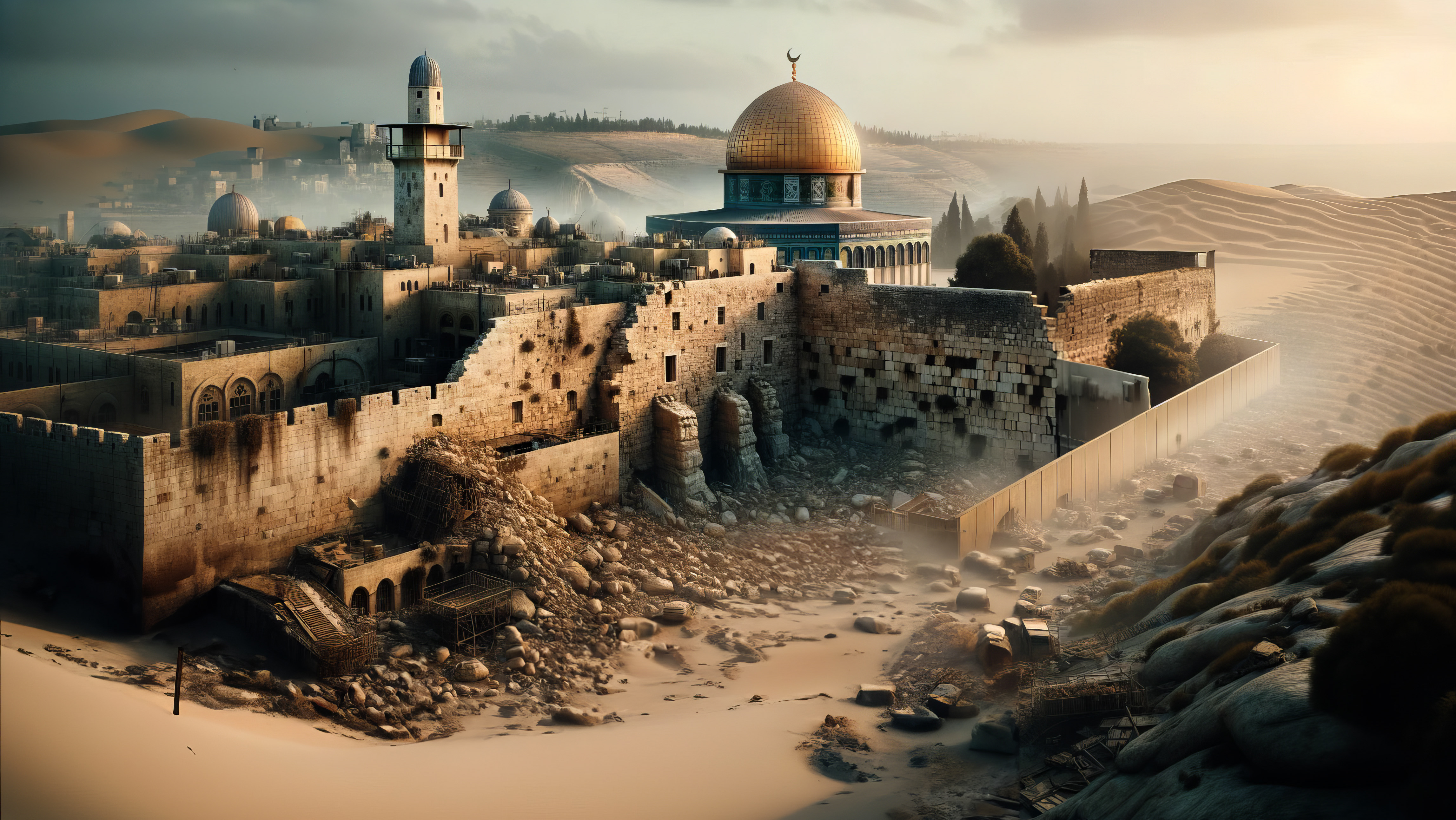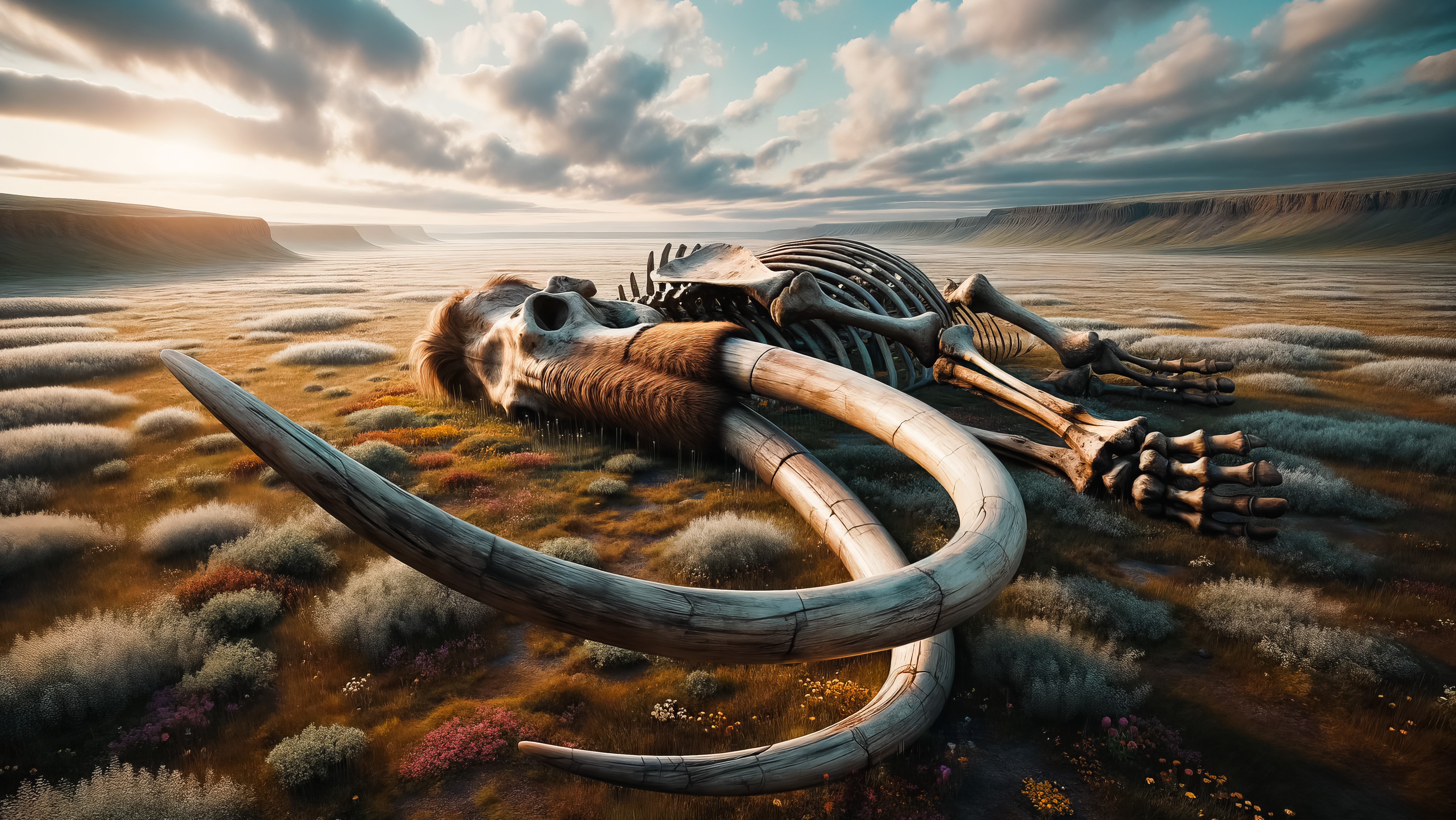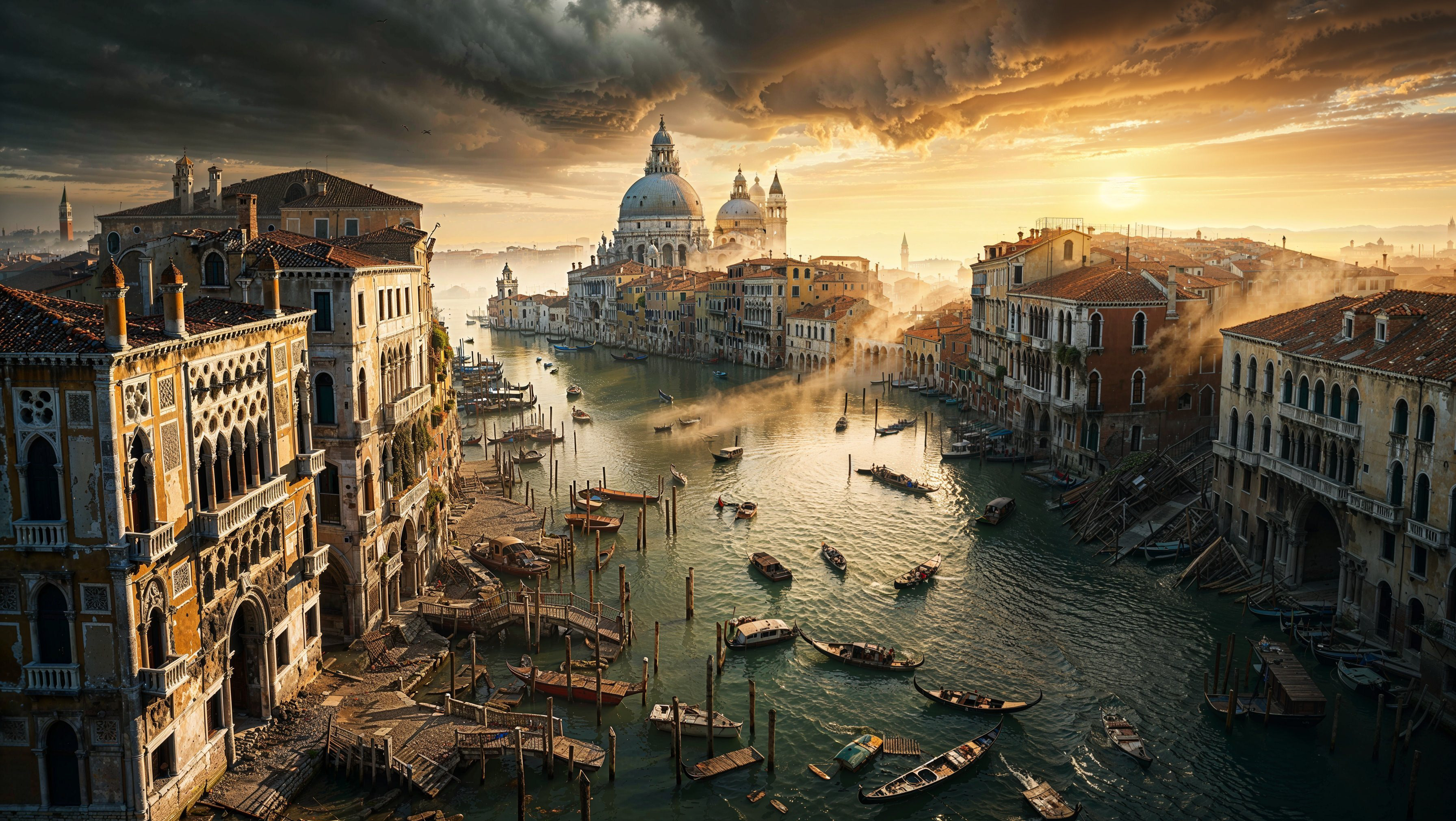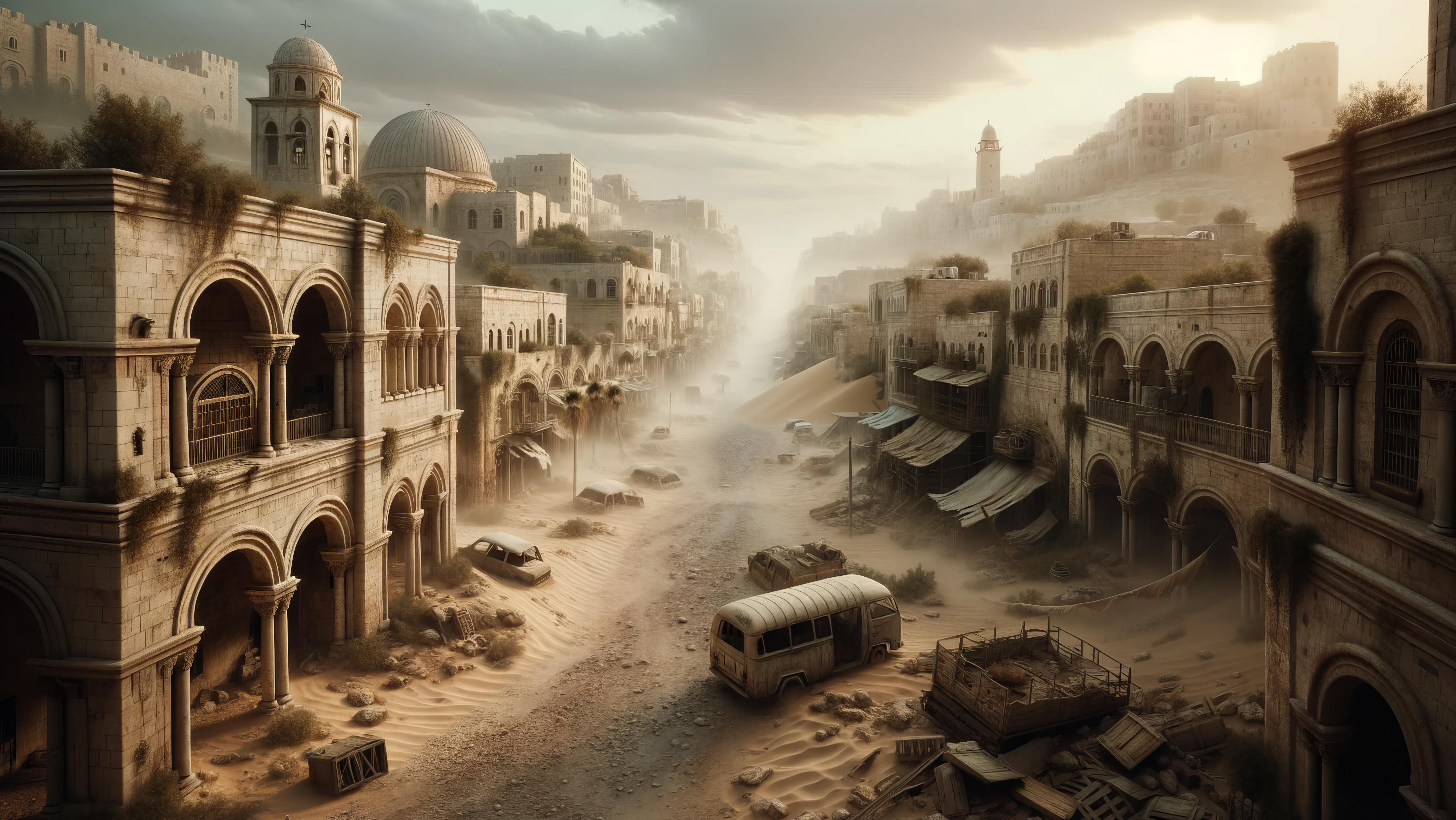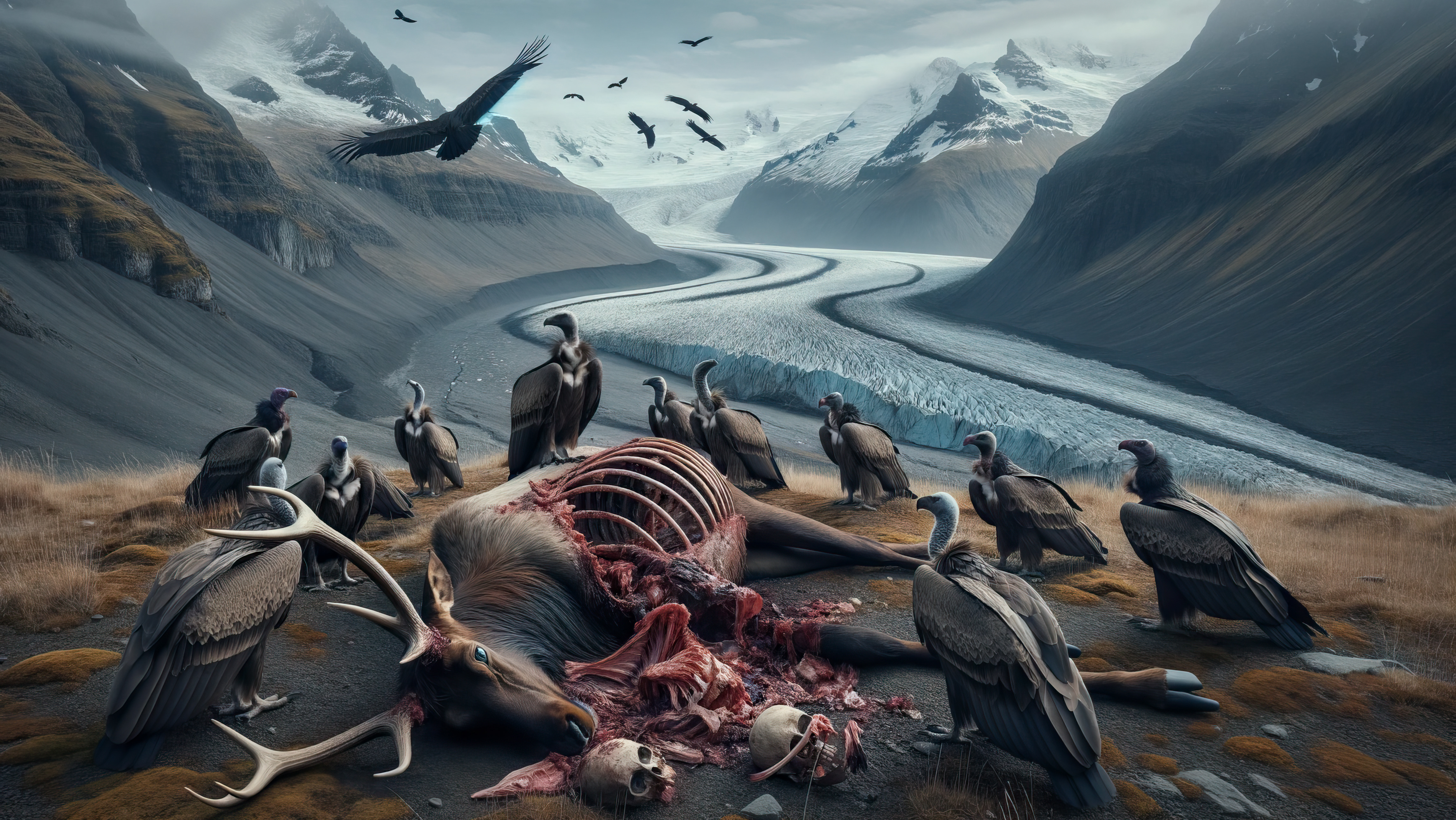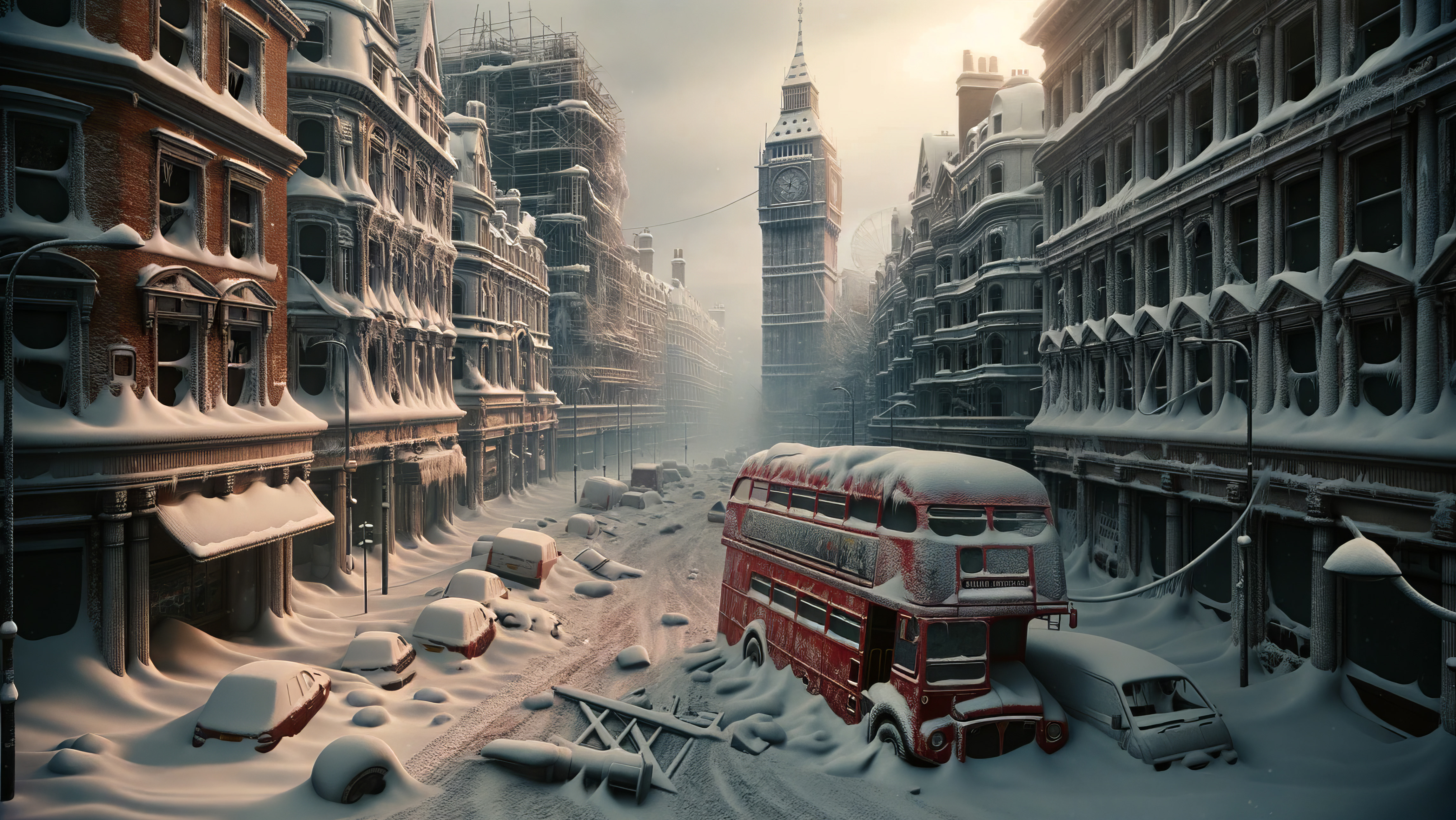The Silent Arrival
The world was different now. A haunting stillness pervaded the atmosphere, a profound silence that seemed to echo through the annals of time. As I stepped out of the temporal portal, the weight of the desolation pressed down on me, a tangible reminder of the world that once was.
San Francisco, with its iconic skyline and bustling streets, had been a testament to human ingenuity and resilience. But now, it stood on the precipice of annihilation, its final moments ticking away as the Earth rumbled in discontent. The ash-filled skies painted a canvas of despair, with hues of orange and grey blending into a melancholic tapestry.
I had arrived at what was once the heart of the city, Union Square. The statues, once gleaming in the Californian sun, were now coated in a thick layer of volcanic ash. The famous Dewey Monument, with its triumphant Goddess of Victory, seemed to mock the very idea of triumph in the face of such overwhelming desolation.
The stores around the square, symbols of opulence and luxury, stood abandoned. Their windows, once displaying the latest fashion trends, were now shattered, revealing the remnants of a world that had moved on. I could almost hear the distant laughter, the chatter of shoppers, and the hum of life that once filled these streets. But those sounds were now replaced by the eerie whistle of the wind and the distant rumblings of the Earth.
As I walked, my boots left footprints in the thick ash, a transient mark of my presence in a world that was slipping away. The air was thick, making every breath an uphill task. I pulled out my mask, a necessary tool for my expeditions, and secured it over my face. The filtered air brought a momentary relief, but the gravity of my mission weighed heavily on my mind.
I had been to many places and witnessed the aftermath of humanity's exit, but San Francisco was different. The impending volcanic eruption added a sense of urgency, a race against time to document and understand the final moments of this once-great city.
Drawing out my digital journal, I began to make notes. The technology of my time allowed for instant documentation, capturing images, sounds, and even emotions. But I preferred the old ways, the act of writing, of putting thoughts to paper. It felt more real, more connected to the world I was studying.
As I wrote, a thought struck me. The comparison to Pompeii was inescapable. Just like the ancient Roman city, San Francisco was on the brink of being frozen in time, its final moments preserved for eternity by the volcanic ash. But unlike Pompeii, no human populace was left to be immortalised in their final moments. The world had moved on, and I was its lone witness.
With a heavy heart, I closed my journal and looked around. The city awaited, and I had much to explore. My journey had just begun, and the shadows of San Francisco beckoned.
Echoes of Chinatown
The streets of Chinatown, once vibrant with life and colour, now lay in muted silence. The iconic Dragon Gate at the entrance stood tall, its intricate carvings covered in ash, giving it an ethereal, ghostly appearance. The once-bustling Grant Avenue, with its myriad of shops and eateries, was now a desolate path leading into the heart of a forgotten world.
As I ventured deeper, the red and gold lanterns that hung from the balconies caught my attention. They swayed gently, their once bright colours dulled by the volcanic smog, casting eerie shadows on the ground. The lanterns, symbols of prosperity and good fortune, now seemed to mourn the loss of a community that had thrived here for generations.
The aroma of dim sum, roast duck, and incense that once permeated the air was replaced by the acrid smell of sulfur. Every step I took echoed in the silence, reverberating through the narrow alleyways. The murals on the walls, depicting scenes from Chinese folklore, looked on with melancholy eyes, their vibrant hues now subdued.
I paused in front of an apothecary, its wooden shelves still lined with jars of herbs and traditional medicines. The labels, written in elegant calligraphy, hinted at remedies for ailments that no longer plagued this world. Next door, a tea shop with its ornate teapots and cups lay in disarray as if time had stopped mid-brew.
Amidst the desolation, a soft chime caught my ear. Following the sound, I discovered a wind chime hanging outside a residence. Made of delicate jade pieces, it tinkled softly, a melancholic tune that seemed to resonate with the sorrow of the surroundings.
Drawing a parallel, I realised that Chinatown was much like the city of Pompeii. Both were cultural epicentres, rich in history and tradition, now on the verge of being entombed forever. The advancing lava, a molten river of destruction, was inching closer, and soon, this cultural gem would be submerged in fiery oblivion.
The Fiery Bay and the Golden Silhouette
Leaving Chinatown behind, I approached the bay, hoping to catch a glimpse of the iconic Golden Gate Bridge before it was consumed. The journey was surreal. The streets, once filled with trams, laughter, and music, now echoed with the distant roars of the Earth and the soft crunch of ash beneath my feet.
Reaching the viewpoint, the sight that greeted me was both magnificent and terrifying. The bay, usually a serene expanse of blue, now shimmered with reflections of distant fires. The waters, agitated by the seismic activity, lapped at the shores with an urgency as if trying to escape their fiery fate.
The Golden Gate Bridge, a marvel of engineering and a symbol of San Francisco's indomitable spirit stood shrouded in volcanic smog. Its once radiant red-orange towers were now just faint silhouettes against the backdrop of the orange skies. The suspension cables, which had held firm against time and elements, now seemed fragile, ready to succumb to the impending doom.
I took a moment to reflect on the bridge's significance. It was not just a means of transportation but a testament to human ingenuity and perseverance. And now, as the volcano threatened to erase its existence, it stood defiant, a beacon of hope in a world on the brink of obliteration.
Trams in Twilight
The trams of San Francisco were legends in their own right—symbols of a city that clung to its history even as it raced towards the future. As I approached the once-busy tram lines, the sight was heart-wrenching. These vehicles once ferried countless souls across the city's undulating streets, now lay derailed and desolate.
The Powell Street line, one of the most famous routes, was a scene of chaos frozen in time. Trams lay at odd angles, their tracks twisted and contorted by the seismic upheavals. The encroaching lava was already consuming some, their wooden exteriors catching fire, sending plumes of smoke into the already murky sky. The metallic clang of the tram bells, once a familiar sound in the city, was replaced by the sizzling of molten rock and the distant roars of the Earth.
Walking alongside a tram, I could see remnants of its last journey—an abandoned newspaper, its headlines speaking of mundane events, unaware of the cataclysm to come. A child's toy, perhaps forgotten in the rush of evacuation. Each object told a story, a snapshot of a moment forever lost in time.
I took a moment to sit inside one of the trams, untouched by the lava. The seats, once filled with chatter and laughter, now echoed with silence. I could almost hear the conductor's voice announcing the next stop, the soft hum of conversations, the occasional bark of a dog. But those sounds were long gone, replaced by the symphony of destruction playing outside.
As I penned my observations, the comparison to Pompeii became even more evident. Like the ancient city, San Francisco's trams were set to become time capsules, preserving the final moments of a civilisation on the brink of extinction.
Wharf in Flames
The journey to Fisherman's Wharf was a trek through a city transformed. The once-bustling streets, filled with tourists and locals alike, now lay abandoned, the silence broken only by the occasional rumble of the Earth.
As I approached the wharf, the scent of saltwater mixed with the acrid smell of burning. The port buildings, once a hub of activity, were slowly being consumed by the relentless advance of the lava. The flames danced on the wooden structures, casting eerie shadows on the ground, their glow reflecting off the bay's waters.
I stood at a vantage point, documenting the destruction. The sight of the port buildings, with their history and significance, being reduced to ashes was a poignant reminder of the impermanence of human achievements. The boats and ships, which had once sailed the vast expanse of the Pacific, now lay anchored, their journeys cut short by the apocalypse.
The evening turned to night, and the wharf was set ablaze. The once-familiar silhouette of the port was now a raging inferno, the flames reaching for the heavens, challenging the very gods. By dawn, all that remained was the skeletal structure of the buildings and their charred remains standing as monuments to a bygone era.
As the first rays of the sun pierced the ash-filled skies, I reflected on the transient nature of existence. The wharf, with its fishermen and traders, its stories of adventures on the high seas, was now a chapter in the annals of history, never to be relived.
Sacred Grounds Shattered
San Francisco was home to numerous churches, each a testament to the city's diverse cultural and religious tapestry. As I ventured towards the city's ecclesiastical district, the toll of the seismic activity became heartbreakingly evident.
The Grace Cathedral, an iconic structure atop Nob Hill, was the first to come into view. Its neo-Gothic architecture, which had once soared towards the heavens, was now marred by deep fissures. The grand spires, which had stood tall for over a century, lay crumbled, victims of the earthquakes that heralded the volcano's awakening. The intricate stained-glass windows, once painted the interiors with a kaleidoscope of colours, were shattered, their beauty lost to the annals of time.
A few blocks away, the Old Saint Mary's Cathedral bore a similar tale of destruction. The bell tower, which had once called the faithful to prayer, was tilted precariously, threatening to collapse at any moment. The stone walls, etched with history and countless blessings, bore deep cracks, a testament to the Earth's fury.
As I walked amidst the ruins, the silence was palpable. These sacred grounds, which had once echoed with hymns and prayers, were now silent witnesses to the end of an era. The pews, where families had once come together in worship, lay scattered, upturned by the force of the quakes.
Amid the destruction, a glimmer caught my eye. Approaching cautiously, I discovered a crucifix, seemingly untouched by the chaos. Its presence amidst the ruins was a poignant reminder of faith and hope, even in the face of overwhelming despair.
The Science of Destruction
To understand the present, one must delve into the past. San Francisco's impending doom was not a sudden event but the culmination of geological processes spanning millions of years.
The city's location on the Pacific Ring of Fire had always made it a hotspot for seismic activity. Nestled on the San Andreas Fault, the tectonic plates' movements had shaped the city's destiny. The friction between the Pacific and North American plates had resulted in numerous earthquakes over the centuries, each reshaping the city's landscape.
However, the recent volcanic activity was linked to a far more ominous event – the awakening of the Yellowstone super-volcano. This behemoth, lying dormant for thousands of years, had erupted with unparalleled fury a few years prior. The chain reaction had led to a series of volcanic eruptions, each more devastating than the last.
The magma chamber beneath Yellowstone had shifted, its contents spewing in a cataclysmic event. This had set off a chain of volcanic eruptions, moving westwards towards the coast. San Francisco, with its precarious location, was the latest in the line of fire.
As I documented the geological events, the ground beneath rumbled, a stark reminder of the city's impending fate. The chain of events, from the tectonic plate movements to the supervolcano's eruption, was a testament to the Earth's ever-evolving nature, a reminder of the delicate balance between creation and destruction.
The Final Dawn
The sun began ascent, casting a muted golden hue over the ash-laden skies. San Francisco, once known for its breathtaking sunrises, now witnessed a dawn tinged with melancholy. The city's silhouette, with its iconic landmarks, was barely discernible against smog and fire.
I made my way to the Presidio, hoping to catch a panoramic view of the city before its final moments. The vast expanse of green, which had once been a haven for picnickers and nature enthusiasts, was now a barren wasteland. The trees, stripped of their foliage, stood like skeletal sentinels, bearing witness to the apocalypse.
From my vantage point, the city lay sprawled below, its beauty marred by the scars of destruction. The once shimmering bay was now a turbulent cauldron, its waters reflecting the fiery inferno within the city. The distant roars of the Earth, coupled with the sizzling of the advancing lava, created a symphony of destruction.
As I stood there, a profound sense of loss washed over me. San Francisco, with its rich tapestry of cultures, its history, and its indomitable spirit, was on the brink of being lost forever. The memories of its people, their joys, sorrows, dreams, and aspirations, were set to be entombed in volcanic ash and preserved for eternity.
Reflections Amidst Ruins
With the city's final moments drawing near, I sought solace in the ruins of the San Francisco Public Library. This bastion of knowledge, once a beacon of enlightenment, now lay in ruins. The shelves, once lined with books spanning myriad subjects, were now covered in ash, their contents reduced to charred remnants.
As I walked through the aisles, the weight of the loss became palpable. Generations of knowledge, humanity's collective wisdom, were on the brink of being lost. The tales of heroes and villains, of love and despair, of dreams and nightmares, were set to be silenced forever.
Amidst the ruins, I chanced upon a book, its pages miraculously preserved. It was a collection of poems, each echoing the human spirit's resilience. As I read, the words resonated with me, a testament to the indomitable will of a species that had once ruled this planet.
Farewell to a Legend
The time had come for me to bid farewell. San Francisco, with its myriad tales, its triumphs, and its tragedies, had left an indelible mark on my soul. As I activated the temporal portal, preparing to return to my time, I took one last look at the city.
The Golden Gate Bridge, its silhouette fading against the fiery backdrop, stood as a testament to human ingenuity. Chinatown, with its rich cultural heritage, echoed the tales of countless souls who had called it home. The trams, churches, and wharf had a story to tell, a chapter in the annals of history.
With a heavy heart, I stepped into the portal, leaving behind a world on the brink of oblivion. But as I journeyed back to my time, I carried with me the tales of San Francisco, a legend that would be passed down through the ages, a reminder of the transient nature of existence and the eternal spirit of humanity.
